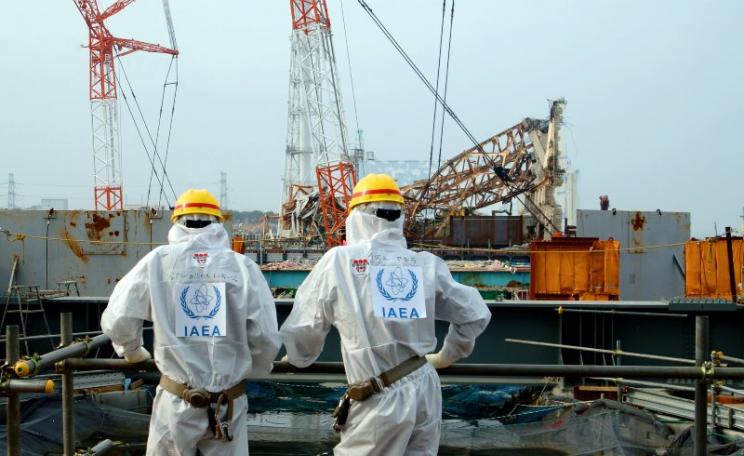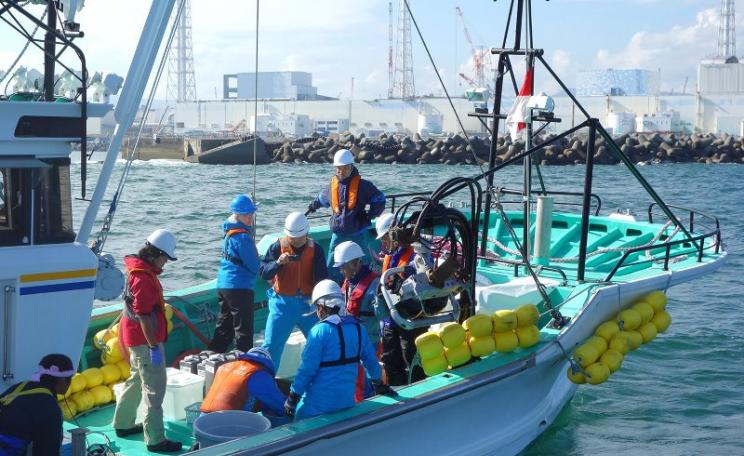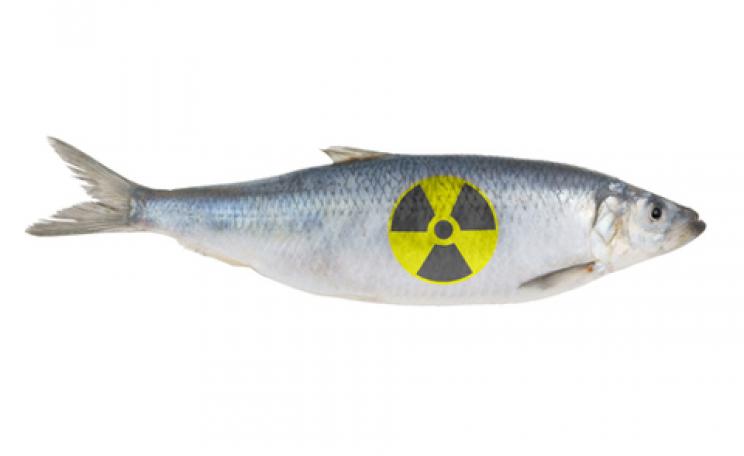There will be no data about the fate of Fukushima marine radioactivity along the 400km Pacific coast of Honshu island, most affected by the Fukushima event, and no research at the shoreline where coastal zone populations are most exposed to it.
Review of the official Japanese marine monitoring programme reveals that the Japanese government is turning a blind eye to the risks of marine radiation from the stricken Fukushima site.
The strategy it has adopted, with the support of the IAEA, consistently ignores the latest evidence about the way marine radioactivity behaves in inshore marine environments and the potential radiological risks to coastal populations.
This strategy is based on a flawed hypothesis, developed by the nuclear industry through the late 1940s and early 1950s, when both oceanography and the study of the behaviour and fate of radioactivity in marine environments were in their absolute infancy.
As a result, the principal conclusions on the marine impact of the Fukushima event put forward in recent reports from the IAEA, the Government of Japan and it's relevant agencies, minimise the environmental and public health negatives and emphasise a range of hypothetical 'positives'.
This is a major flaw because the empirical evidence from 'non-aligned' research in the UK is that coastal communities are subjected to highly enriched doses of marine radioactivity through pathways of exposure, and from environmental parameters, which will not be analysed and researched under current Fukushima monitoring plans.
As a result, significant public health impacts of the event will not be documented, nor will important data about the way Fukushima marine radioactivity behaves at the coastline.
Failing to gather the evidence of coastal radiation
The Japanese plans lack any research at specifically 'coastal' or 'shoreline' sites. The available evidence implies that the monitoring sites are at least 1km offshore and the majority over 5 km offshore.
This omission means that there will be no data about the behaviour and fate of Fukushima marine radioactivity along the 400kms long Pacific coast of Honshu island most directly affected by the Fukushima event.
Similarly, there will be no research at the shoreline where coastal zone populations are most likely to 'interface' with marine radioactivity, and no assessment of the radioactivity doses delivered to these populations.
Review also confirms a major focus on short lived Caesium isotopes, with a secondary focus on a limited number of other beta emitters, also with short half lives. By contrast, there is an almost total absence of any work on the long lived alpha emitters, which have been only sparsely studied in the relatively small sea area immediately adjacent to the Fukushima outfalls.
In the context of the high risks to be incurred from internal doses of such alpha emitters, and their well-attested transportability in marine environments, this is an astonishing omission.
The nuclear industry hypothesis proposed that fully soluble radioactivity, such as Caesium, mixes very well in the marine water body and thus is dispersed and diluted to infinity or background. On page 39: of Technical Volume 4/5. of the IAEAs 2015 'Fukushima Daiichi Accident Report', the IAEA repeat this assertion.
There will be no data about the fate of Fukushima marine radioactivity along the 400km Pacific coast of Honshu island, most affected by the Fukushima event, and no research at the shoreline where coastal zone populations are most exposed to it.
Radiation is concentrated in marine sediments
However, empirical evidence from UK research (all cited in my testimony to the House of Commons) powerfully refutes this claim and demonstrates that soluble radioactivity is transported over hundreds of kilometres in sea water and then re-concentrated (relative to ambient sea water) in both pore-water and fine sediments deposited out of the water column and into coastal mud flats and salt marsh.
There is a wealth of empirical field data to show that, wherever investigated, sea borne Caesium transfers across the UK surf line by a variety of mechanisms including coastal flooding, and also marine aerosols and sea sprays, where Caesium may undergo enrichment relative to seawater.
The nuclear hypothesis proposed that insoluble radioactivity, like alpha emitting Plutonium and Americium (which partition out of the water column by ad-sorbing to the outer surface of suspended sedimentary particles), becomes attached to suspended particles in the marine water column, deposits out on the sea bed near the end of discharge pipelines and there remains immobilised and sequestered from human beings.
UK empirical evidence also refutes this claim and demonstrates that such 'insoluble radioactivity' is also highly mobile, can travel 100s of kms in marine water columns, deposit out in inshore mud flats and salt marshes where it can become enriched by a factor of ten.
In marine aerosols and sea spray it may be enriched by up to factor of 400 (relative to ambient seawater) and, wherever investigated, transfers across the surf line and into the coastal, terrestrial zone.
On the basis of their flawed original hypothesis it has become an article of faith for the nuclear industry and the IAEA to insist that dietary doses of marine radioactivity are only received by sea food consumers (seaweed, shell fish, crustaceans and fin fish). Thus the Japanese Government / IAEA plan sets out a strategy for the monitoring of such sea foods, but not to monitor other forms of dietary consumption of marine radioactivity.
Transported hundreds of kilometres, reaches at least 16km inland
UK empirical evidence refutes this claim: and has demonstrated that dietary doses of marine radioactivity are also received from coastal, terrestrial foodstuffs (animal, arable and horticultural products and wild foods) grown and harvested in coastal areas (16km or more inland) which are subjected to sea to land transfer mechanisms from sediment rich, inshore waters contaminated by liquid nuclear waste discharges, and facing prevailing onshore winds.
UK research shows that such mechanisms can occur at least 200km (by sea) distant from the point source of radioactivity, and that populations living in such areas are exposed to terrestrial food stuffs which can deliver a higher marine radioactivity (dietary) dose than do locally harvested sea foods.
Analysis of this research has shown that coastal populations 'distant' from a discharge point of 'liquid' radioactive wastes, may receive higher doses of marine radioactivity through their local terrestrial diet, than populations living adjacent to liquid radioactive waste point sources receive through their local sea foods.
It can be deduced that when marine radioactivity is transported across the surf line in marine aerosols and sea spray, penetrates at least 16km inland and contaminates coastal produce, then an inhalation pathway and subsequent inhalation dose is also inevitable. None of the investigations of Fukushima marine radioactivity have investigated or researched these coastal / shoreline issues.
The study of the behaviour and fate of the radioactive effluents discharged to UK coastal waters provides a baseline for identifying potential pathways by which terrestrial coastal zone populations will be exposed to doses of marine radioactivity following the Fukushima event.
Sea to land radiation transfer in spray and aerosols
Japanese monitoring shows that the Fukushima event has raised radioactivity concentrations very significantly in the marine environment off the greater majority of (Honshu's) Pacific coastline.
There are a range of Pacific coast environments where the conditions are likely to re-concentrate radioactivity in inter tidal and sub tidal sediments and to generate sea to land transfer of radioactivity and subsequent exposure of terrestrial coastal zone populations to doses of marine radioactivity by way of several pathways
Some sectors of this coast are characterised by extensive areas of inter tidal and sub tidal mudflats and salt marsh which have the potential to be long term deposition and re-concentration sites for both beta and alpha emitters.
UK research shows that alpha emitting radioactive material from such environments is able cross the tide line during inundation events driven by storm surge, peak high tides and severe storms such as tropical storm 'Typhoon Etau' (early September 2015).
Where such environments are open to strong wind and wave action, sea to land transfer of enriched alpha and beta emitting radioactivity in sea sprays and marine aerosols is shown to occur.
Open coasts, such as those to the immediate north of Fukushima and extending southward (downstream) of the Fukushima outfalls, are also shown to be subject to the sea to land transfer of soluble nuclides during periods of strong onshore wind and enhanced wave activity.
Prolonged periods of onshore winds are a strong feature of the annual meteorological cycle and the east coast of Japan is a frequent victim of tropical cyclonic storms.
A dereliction of duty to science and citizens' health
UK research clearly shows that coastal zone populations are exposed to doses of marine radioactivity under the following set of environmental parameters:
- resident in coastal zones up to at least 200kms downstream of a source of liquid radioactive discharges to sea
- resident in coastal zones adjacent to coastal waters with high suspended sediment loadings
- resident in coastal zones adjacent to extensive fine sediment inter tidal/sub tidal sediment deposits (salt marsh, mud flats etc)
- resident in coastal zones subject to prevailing onshore winds and storm or tidal conditions generating marine aerosols, sea spray and coastal inundation
- resident in coastal zones where such parameters (A to D above) have, elsewhere, been shown to enable/facilitate the penetration of marine radioactivity for across the shoreline and up to 10 miles inland from the coast.
The UK experience has shown that such populations are subjected to doses of marine radioactivity delivered to coastal zone terrestrial environments via aerosol and/or sea spray transfer across the surf line, coastal / estuarine inundation, deposition of sea to land transferred material onto terrestrial crops / produce, dietary doses, inhalation doses and possible 'contact' doses.
In the context of the un-quantified, but inevitably very high, total aggregated marine radioactivity from the Fukushima event, the equally high levels of event specific alpha and beta emitters measured in marine water and sediment adjacent to the Pacific coast of Japan, and the very high Enrichment Factors possible during sea to land transfer, the health risk to coastal populations in those areas with the relevant parameter areas is a matter of major concern.
Japan's failure to undertake any research in to the potential impacts of the Fukushima marine radioactivity upon this most exposed population group represents a dereliction of duty to both science and to the safeguarding of public health.
Tim Deere-Jones is an independent marine pollution consultant on some of Europe's major marine environmental incidents. A major part of his work consists of desk and field research on the behaviour and long term fate of man made radioactivity in marine environments. Tim's ongoing research supports the work of anti nuclear NGOs and Citizens Campaigns in the UK and across Europe. Tim is a graduate of Cardiff University's Department of Maritime Studies and a member of a number of anti nuclear advisory bodies including the International Nuclear Risk Assessment Group.
Sources
- IAEA Report 'The Fukushima Daiichi Accident' (report and 5 technical volumes).
- Fukushima 'Annual Sea Monitoring Plans'. Follow links for 'Monitoring Plans'.
- Fukushima Marine Radioactivity Monitoring Results.
- 'UK government failing to protect population from potentially radioactive food' - Tim's previous review of the behaviour and fate of UK marine radioactivity, The Ecologist, Vol 21 No 1 - Jan/Feb 1991.
- Energy and Climate Change Committee: Written evidence submitted by Tim Deere-Jones (NUC 33).






